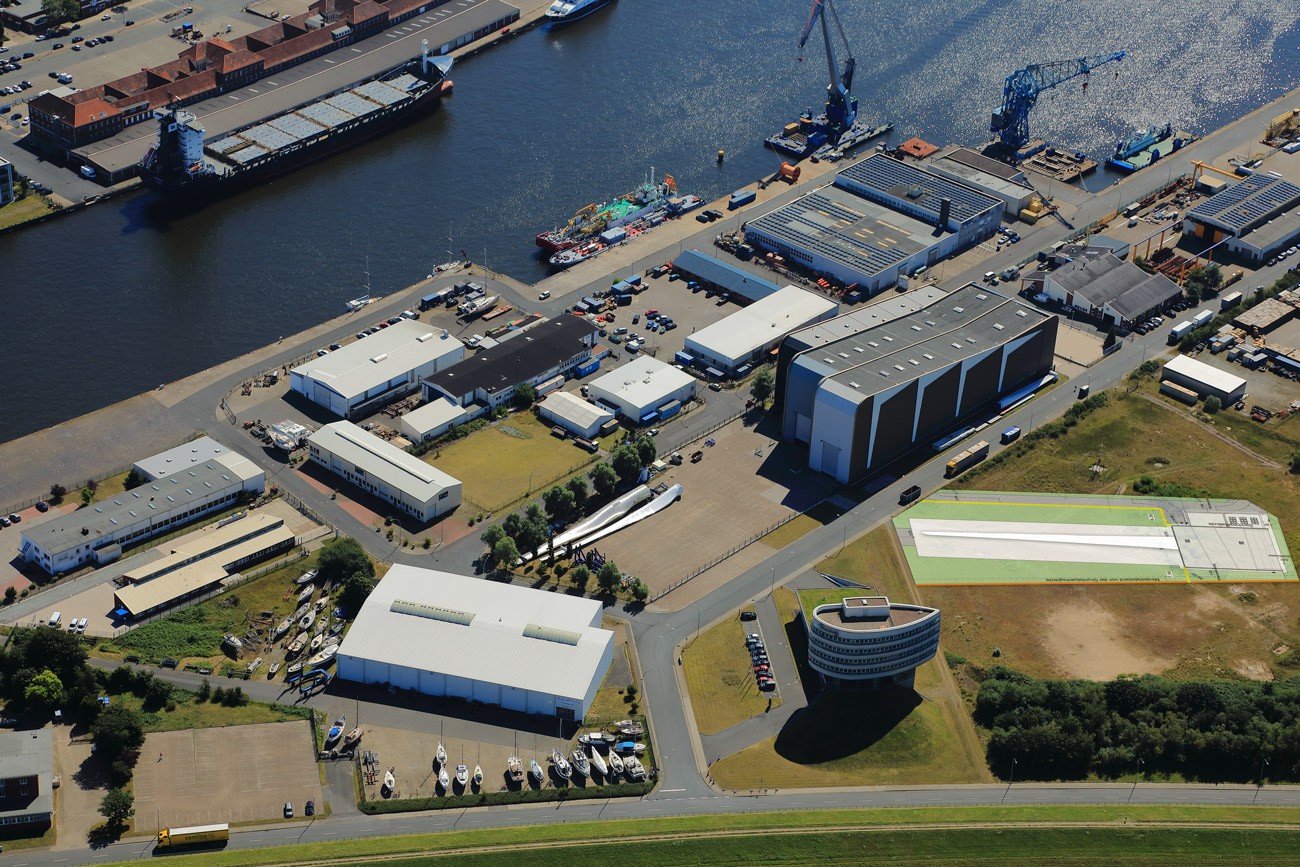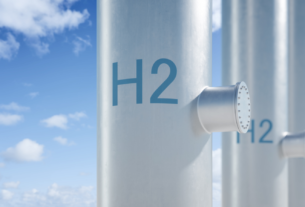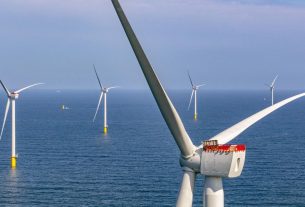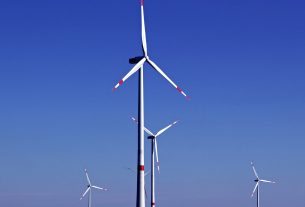Germany – The Fraunhofer IWES has started construction work on a third rotor blade test bench at its Großer Westring site in Bremerhaven, Germany.
Once complete, the bench will be used to test prototypes measuring 115 meters in length and even more. Some €19 million are set to be invested in the project bearing the name “Future Concept for Fatigue Strength of Rotor Blades Phase II”, which will see the construction of a testing infrastructure with a modular test block and the development of new methods for investigating subsegments. The site at the Fischereihafen offers the advantage that long blades which have been transported by sea have only a short distance to travel to the testing hall.
Site for XXL blades
In the past five years, the dimensions of the latest generation rotor blades have grown from almost 90 meters to 115 meters and now measure the same length as a soccer field. This lighting-speed development has even exceeded the imagination of industry experts: the Fraunhofer IWES commissioned its 90-meter test hall exactly ten years ago. The dimensions have continued to grow and the two existing halls enjoy good capacity utilization, yet, up to now, the institute has lacked the appropriate infrastructure to accommodate requests to test XXL blades from international manufacturers. This is now to be remedied at the Bremerhaven site, and the bench is to be commissioned in summer 2022. The Federal Ministry for Economic Affairs and Energy (BMWi) is financing the project to the tune of €14.8 million.
Completion of test hall the year end
Rotor blades are key for the performance, reliability and costs of wind turbines. The investments made in assuring the quality of rotor blade development speak for themselves: the 600-ton steel test block which secures the rotor blade can be tilted and the blade can be rotated through 180 degrees on the block via a corresponding device. What’s more, the construction can be expanded and converted should changes to the market make amendments necessary.
The first visible step in the test bench setup is the anchoring of the 175 piles in the sandy soil of the construction site. These ensure that the huge loads which occur during testing are transferred. A gantry crane for lifting the giant rotor blade is designed to carry a load of 120 tons – the equivalent of 20 elephants. The next milestone is the completion of the test hall by the end of the year. The test block and measurement technology will be ready in 2022.
Since the testing of a rotor blade can take several months, the third test bench will not only boost capacity but also bolster Bremerhaven as an IWES institute location. The State of Bremen and the Federal Ministry of Education and Research (BMBF) are supporting the infrastructure project with around €4 million in ERDF funding.
New testing methods
The rotor blade experts from IWES also hope to make testing more intelligent by developing new methods. One particular focus, for example, is on biaxial testing of complete blades. With this test method, the rotor blade is set in motion along its transverse and longitudinal axes in both the impact and pivoting directions and the structural behavior under load is measured using sensors. This allows simulation of a particularly realistic load distribution.




